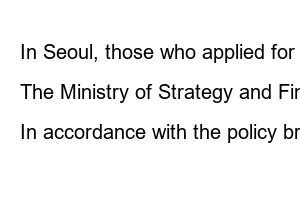노후경유차 조기폐차 지원금The Ministry of Strategy and Finance and the Ministry of Environment announced on the 4th that starting from the 5th, they will expand and reorganize the support project for early scrapping of old diesel vehicles with emissions class 5 this year.
This year, the volume of early scrapping of old diesel vehicles increased from 300,000 last year to 340,000, and the upper limit of subsidies per vehicle for old diesel vehicles for which exhaust emission reduction measures are difficult was raised from 3 million won to 6 million won.
Additionally, additional subsidies are provided when owners who dispose of their vehicles early purchase used cars with emissions of class 1 or 2 (electric, hydrogen, hybrid, gasoline, LPG, etc.).
This year’s early car scrapping support project is aimed at compensating for restrictions on mobility rights caused by restrictions on the operation of old diesel vehicles, such as the fine dust seasonal management system.
Looking at the main details, first, the upper limit of early scrapping subsidy for vehicles that cannot be equipped with exhaust emission reduction devices among old diesel vehicles with a gross weight of less than 3.5 tons and class 5 emissions, or vehicles owned by subsistence, commercial, or small business owners, has been increased from the original 3 million won. Expanded to 6 million won. 70% of the maximum subsidy amount is supported when a vehicle is scrapped early, and 30% is supported when purchasing a vehicle thereafter.
In addition, considering that most owners of old diesel vehicles are low-income and prefer to purchase used cars after scrapping them, subsidies (30% of the total subsidy ceiling, up to KRW 1.8 million) are provided to used cars (electric vehicles, hydrogen vehicles) that fall into the 1st and 2nd emission levels. , hybrid cars, gasoline cars, LPG, etc.) are also paid when purchasing.
Initially, the subsidy for early scrapping of cars was 70% (up to 2.1 million won) of the standard price calculated by the Korea Insurance Development Institute, and an additional subsidy of 30% (up to 900,000 won) was provided for the purchase of new vehicles other than diesel vehicles.
It is expected that this reform of the subsidy system will reduce the repurchase rate of diesel vehicles and increase the effect of improving air quality.
Local governments across the country are scheduled to announce plans for early vehicle scrapping support projects for each local government starting on the 5th, and the Korea Automobile Environment Association will handle the support project procedures.
Applications for the early scrapping support project can be made by mail or fax to local governments and the Korea Automobile Environment Association, and through the automobile emissions rating system website.
If you apply for early scrapping of your car on the website, you do not need to submit an application to confirm eligibility for early scrapping subsidy, and you can receive progress information via text message to your mobile phone after applying.
Inquiries related to subsidy support applications can be received through the consultation office (Korea Automobile Environment Association call center, 1577-7121), and related information can also be found in the notices of each local government.
Meanwhile, the Ministry of Environment is registering vehicles caught under Class 5 vehicle driving restrictions in the metropolitan area during the 2nd Fine Dust Seasonal Management System (December 2020 to March 2021) so that they can be given priority support for the early scrapping support project. We decided to cooperate with local governments.
During the two months of implementation of the 2nd seasonal management system (December 1, 2020 – January 31, 2021), a total of 38,172 vehicles were caught in the crackdown on class 5 vehicle operation restrictions in the metropolitan area, and 8,925 of them were found to have participated in low-emission measures. .
In fact, the total number of vehicles subject to fines is 29,247, excluding 8,925 vehicles exempted from enforcement, such as applications for low-emission measures, from the vehicles caught.
By region, there were 17,370 units in Seoul, 2,657 units in Incheon, and 9,220 units in Gyeonggi Province.
In Seoul, those who applied for low-emission measures and class 5 vehicles that cannot be equipped with a smoke reduction device (DPF) are also subject to crackdowns, so there are more vehicles caught (17,370) than Incheon and Gyeonggi. Seoul plans to refund or cancel fines if low-emission measures are completed or vehicles are scrapped by the end of November this year.
All vehicles detected in Incheon and Gyeonggi are class 5 vehicles that did not apply for low-emission measures.
The Ministry of Strategy and Finance and the Ministry of Environment said, “We will do our best to reduce fine dust emitted from cars along with support for the vulnerable groups by promoting the improved early scrapping subsidy system without a hitch.”
Inquiries: Employment, Environment and Budget Division of the Ministry of Strategy and Finance (044-215-7230), Transportation and Environment Division of the Ministry of Environment (044-201-6920)
In accordance with the policy briefing post operating principles, the following posts may be deleted or the account may be blocked.

